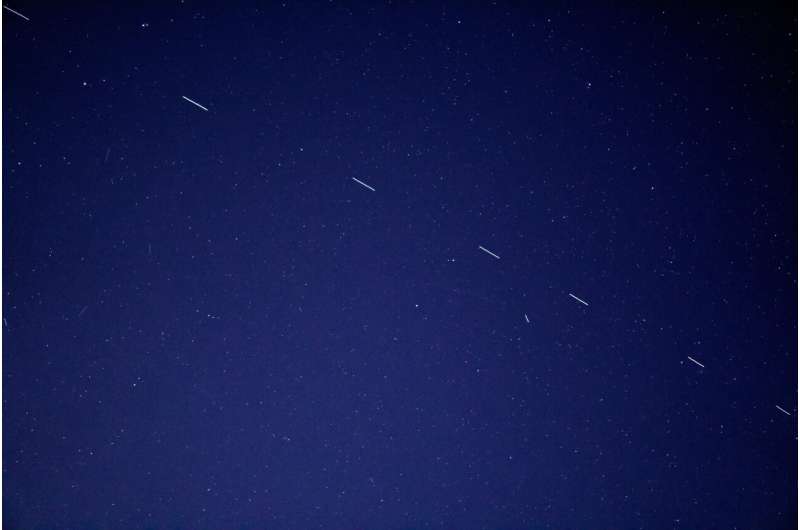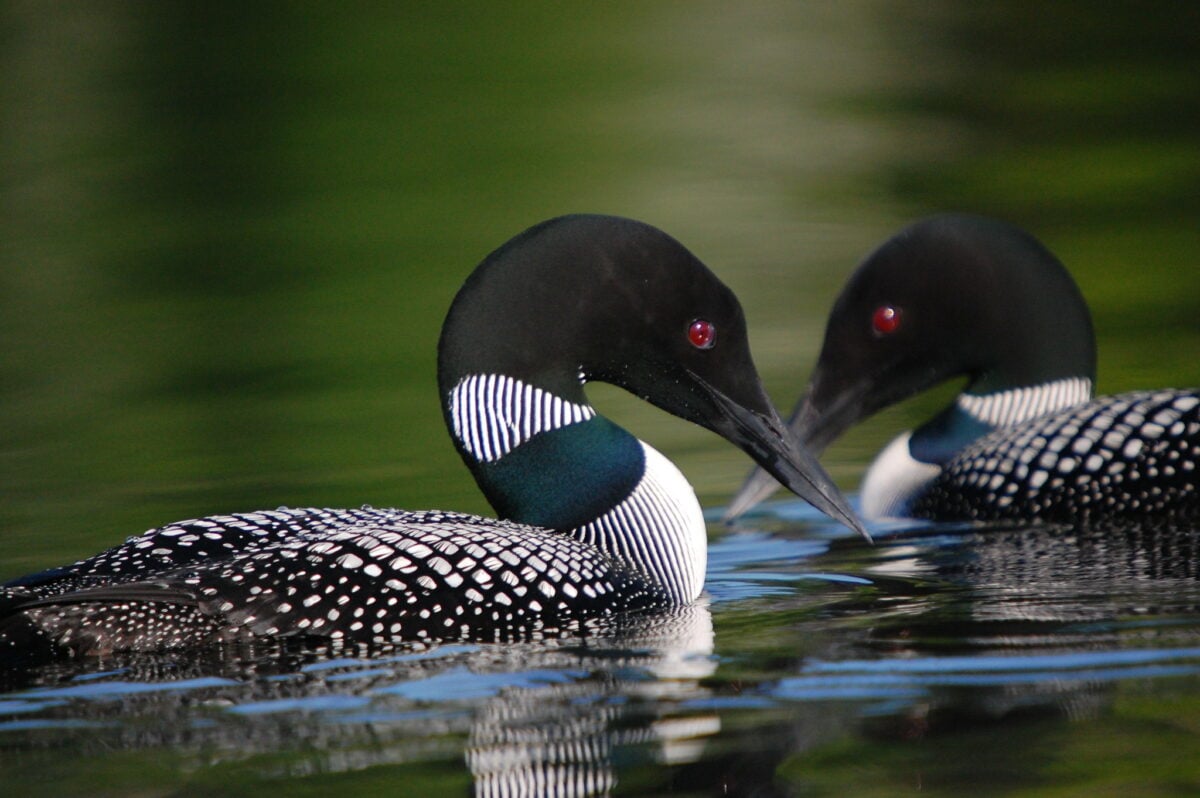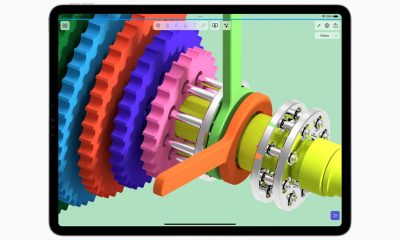Science
NASA's new $30M space toilet is smaller, better smelling and more female-friendly – CBC.ca

Melissa McKinley has spent the last three years helping to build a cutting-edge piece of technology that will make life a lot easier for astronauts on space missions.
NASA’s new $30-million space toilet, the Universal Waste Management System (UWMS), will launch to the International Space Station (ISS) this weekend, where astronauts will test how well it works in micro-gravity.
Designed with astronaut feedback in mind, the new toilet is lighter, smaller, better smelling and more gender-inclusive than the Russian-made toilet currently in use aboard the ISS.
“It’s a fun project to work on because of the technical challenges, and because of the big impact on the crew. Obviously, going to the bathroom is something that the crew has to deal with multiple times a day,” McKinley, a systems project manager at NASA, told As It Happens guest host Helen Mann.
“We have such a talented and technical team working on this. It has truly been exciting to see the challenges and solutions that this team has come up with.”
How does a space toilet work?
While toilets down here on Earth use water to flush away waste, space toilets use use air flow.
Feces is pulled away from the body and into a cannister for later disposal, while urine is sent to the ship’s recycling system to be converted into drinkable water.
“Obviously, that’s a vital part of the overall systems on board,” McKinley said.
The new toilet improves upon existing technology in a number of ways, and it was designed with the help of astronaut feedback to be more comfortable and easier to use, clean and maintain.
“The project team is focused on doing the best job technically. And in order to do that, you have to have those frank conversations, and they become very, very commonplace,” McKinley said.
“The goal there for our team is to make it so that the crew can focus on other things they need to do during space travel and make this a more comfortable and convenient way for them to deal with these bodily functions.”
One big complaint about the previous toilet design is that it “really wasn’t customized for the female experience,” McKinley said. “So this is a chance to customize it more for the female anatomy and more for their use.”
Current design is divided into two parts, with crew using a funnel and hose for peeing, and a seat for bowel movements. The UWMS is designed so that the funnel and seat can be used simultaneously.
Another major factor is the smell.
Orion capsule engineering lead Jason Hutt, tweeted last month: “If you want to recreate that used spacecraft smell, take a couple dirty diapers, some microwave food wrappers, a used airsickness bag, & a few sweaty towels, put them in an old school metal trash can and let it bake in the summer sun for 10 days. Then open the [lid] & breathe deep.”
That shouldn’t be a problem with the UWMS, McKinley said. The new model comes with an odour bacteria filter.
“It’s been said that the air coming out of the toilet is some of the nicest smelling air on the spacecraft,” she said.
But, perhaps, the most important upgrade is the reduced mass.
The UWMS is 65 per cent smaller and 40 per cent lighter than the toilet currently aboard the ISS — which means more room for the astronauts, and a safer launch.
The toilet was supposed to launch on Tuesday aboard a cargo capsule as part of a routine resupply mission, but was delayed due to weather. NASA now hopes to launch by the weekend.
If all goes well, NASA also plans to install the toilet on Orion for a flight test that will send astronauts on a 10-day mission beyond the Moon and back.
Written by Sheena Goodyear. Interview produced by Sarah Peterson.
Science
Nasa's Hubble marks 34th anniversary with stunning view of Little Dumbbell Nebula – The Times of India


In celebration of its 34th anniversary, Nasa‘s Hubble Space Telescope has once again wowed astronomers and space enthusiasts alike by capturing an extraordinary image of the Little Dumbbell Nebula. This latest image offers a vivid glimpse into the complexities of a planetary nebula, demonstrating Hubble’s enduring capabilities in its extended mission.
The Little Dumbbell Nebula, also known as Messier 76, is one of the faintest objects in the Messier catalog and has intrigued astronomers for its intricate structure and dual-lobed shape. This planetary nebula, located approximately 2,500 light-years away in the constellation Perseus, represents a brief stage in the life cycle of a moderate-sized star like our sun.
Dr. Jennifer Wiseman, a senior scientist at Nasa’s Goddard Space Flight Center, expressed her admiration for the new imagery: “This beautiful nebula is what remains after a star like our own sun has exhausted the bulk of its nuclear fuel and shed its outer layers. The vibrant colors and intricate structures visible in the nebula are a telescope’s way of painting the portrait of the final stages of stellar evolution.”
The Little Dumbbell Nebula, despite its faintness, shines brightly in the detailed images provided by Hubble, allowing scientists to study aspects of the nebula that are rarely visible. The images highlight the dense, glowing gas and complex layers of material expelled from the dying star at the center of the nebula.
According to Dr. Wiseman, “Hubble’s high-resolution capabilities allow us to examine the fine details within the nebula, helping us understand how stars expel their material and the dynamics of this expulsion process. This image is more than just a picture; it’s a deep dive into the life of stars.”
Since its launch on April 24, 1990, Hubble has revolutionized our understanding of the universe, from the dynamics of galaxies to the atmospheres of exoplanets and the distribution of dark matter. Its contributions continue to support and complement data gathered by newer space observatories.
As Hubble continues its journey in space, the scientific community remains enthusiastic about the ongoing contributions it will bring to our understanding of the cosmos. Dr. Wiseman remarked, “Every image from Hubble is a new lesson in our cosmic curriculum.”
These observations not only contribute significantly to our knowledge of the life cycle of stars but also continue to highlight the critical role of Hubble in the exploration and understanding of our universe. As Hubble enters another year in orbit, its legacy of discoveries promises to keep inspiring both the scientific community and the public.
Science
SpaceX launch marks 300th successful booster landing – Phys.org


SpaceX sent up the 30th launch from the Space Coast for the year on the evening of April 23, a mission that also featured the company’s 300th successful booster recovery.
A Falcon 9 rocket carrying 23 of SpaceX’s Starlink internet satellites blasted off at 6:17 p.m. Eastern time from Cape Canaveral Space Force Station’s Space Launch Complex 40.
The first-stage booster set a milestone of the 300th time a Falcon 9 or Falcon Heavy booster made a successful recovery landing, and the 270th time SpaceX has reflown a booster.
This particular booster made its ninth trip to space, a resume that includes one human spaceflight, Crew-6. It made its latest recovery landing downrange on the droneship Just Read the Instructions in the Atlantic Ocean.
The company’s first successful booster recovery came in December 2015, and it has not had a failed booster landing since February 2021.
The current record holder for flights flew 11 days ago making its 20th trip off the launch pad.
SpaceX has been responsible for all but two of the launches this year from either Kennedy Space Center or Cape Canaveral with United Launch Alliance having launched the other two.
SpaceX could knock out more launches before the end of the month, putting the Space Coast on pace to hit more than 90 by the end of the year, but the rate of launches by SpaceX is also set to pick up for the remainder of the year with some turnaround times at the Cape’s SLC-40 coming in less than three days.
That could amp up frequency so the Space Coast could surpass 100 launches before the end of the year, with the majority coming from SpaceX. It hosted 72 launches in 2023.
More launches from ULA are on tap as well, though, including the May 6 launch atop an Atlas V rocket of the Boeing CST-100 Starliner with a pair of NASA astronauts to the International Space Station.
ULA is also preparing for the second launch ever of its new Vulcan Centaur rocket, which recently received its second Blue Origin BE-4 engine and is just waiting on the payload, Sierra Space’s Dream Chaser spacecraft, to make its way to the Space Coast.
Blue Origin has its own rocket it wants to launch this year as well, with New Glenn making its debut as early as September, according to SLD 45’s range manifest.
2024 Orlando Sentinel. Distributed by Tribune Content Agency, LLC.
Citation:
SpaceX launch marks 300th successful booster landing (2024, April 24)
retrieved 24 April 2024
from https://phys.org/news/2024-04-spacex-300th-successful-booster.html
This document is subject to copyright. Apart from any fair dealing for the purpose of private study or research, no
part may be reproduced without the written permission. The content is provided for information purposes only.
Science
Wildlife Wednesday: loons are suffering as water clarity diminishes – Canadian Geographic


The common loon, that icon of northern wilderness, is under threat from climate change due to declining water clarity. Published earlier this month in the journal Ecology, a study conducted by biologists from Chapman University and Rensselaer Polytechnic Institute in the U.S. has demonstrated the first clear evidence of an effect of climate change on this species whose distinct call is so tied to the soundscape of Canada’s lakes and wetlands.
Through the course of their research, the scientists found that July rainfall results in reduced July water clarify in loon territories in Northern Wisconsin. In turn, this makes it difficult for adult loons to find and capture their prey — mainly small fish — underwater, meaning they are unable to meet their chicks’ metabolic needs. Undernourished, the chicks face higher mortality rates. The consistent foraging techniques used by loons across their range means this impact is likely echoed wherever they are found — from Alaska to Canada to Iceland.
The researchers used Landsat imagery to find that there has been a 25-year consistent decline in water clarity, and during this period, body weights of adult loon and chicks alike have also declined. With July being the month of most rapid growth in young loons, the study also pinpointed water clarity in July as being the greatest predictor of loon body weight.
One explanation for why heavier rainfall leads to reduced water clarity is the rain might carry dissolved organic matter into lakes from adjacent streams and shoreline areas. Lawn fertilizers, pet waste and septic system leaks may also be to blame.
The researchers, led by Chapman University professor Walter Piper, hope to use these insights to further conservation efforts for this bird Piper describes as both “so beloved and so poorly understood.”
Return of the king
-



 Politics22 hours ago
Politics22 hours agoOpinion: Fear the politicization of pensions, no matter the politician
-



 Politics21 hours ago
Politics21 hours agoPecker’s Trump Trial Testimony Is a Lesson in Power Politics
-



 Science21 hours ago
Science21 hours agoNASA Celebrates As 1977’s Voyager 1 Phones Home At Last
-
Media14 hours ago
B.C. online harms bill on hold after deal with social media firms
-
Media20 hours ago
B.C. puts online harms bill on hold after agreement with social media companies
-
Business20 hours ago
Oil Firms Doubtful Trans Mountain Pipeline Will Start Full Service by May 1st
-



 Investment15 hours ago
Investment15 hours agoMOF: Govt to establish high-level facilitation platform to oversee potential, approved strategic investments
-
Art22 hours ago
Turner Prize: Shortlisted artist showcases Scottish Sikh community






